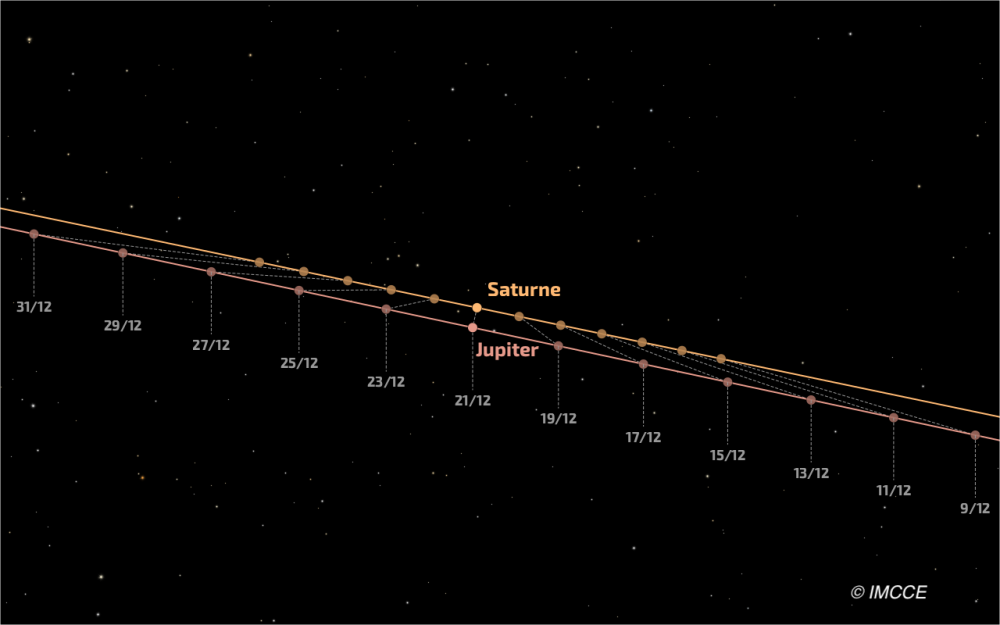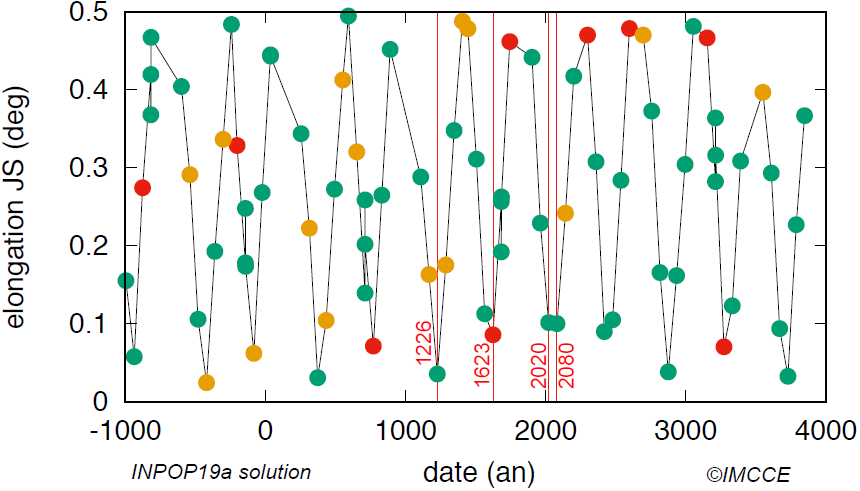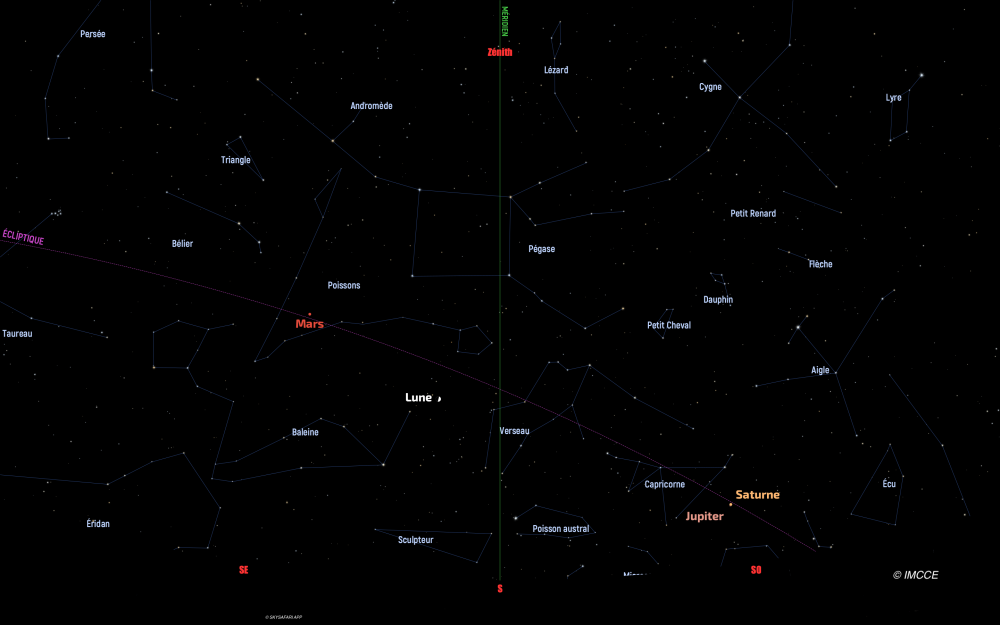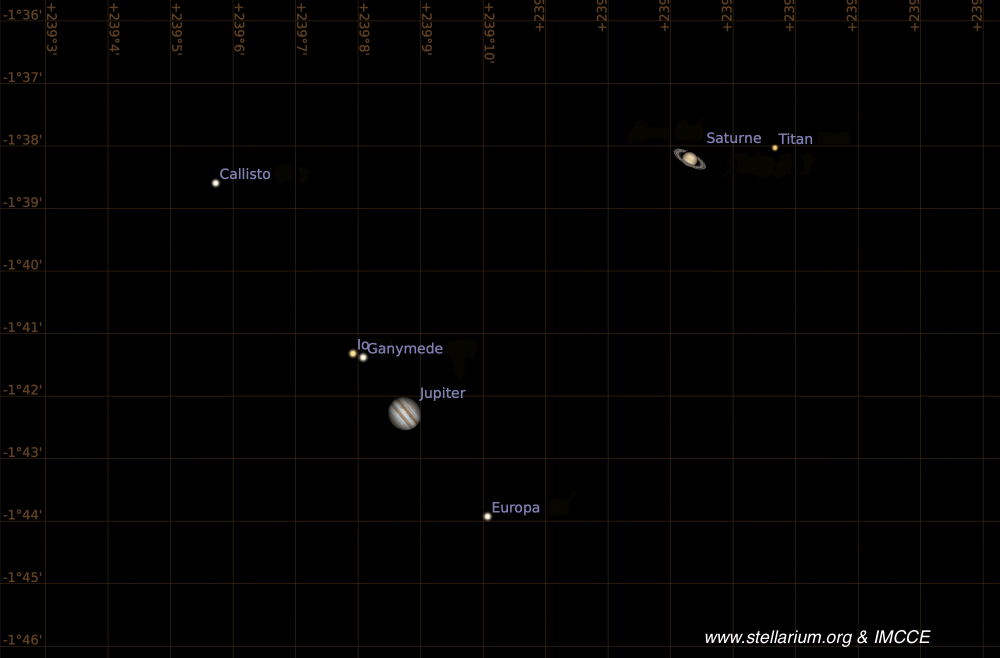The exceptional conjunction of Jupiter and Saturn on December 21, 2020!
Don't miss the show of the exceptional conjunction of Jupiter and Saturn on December 21, 2020!
Jupiter and Saturn are the largest planets in the Solar System and are visible to the naked eye as very bright stars. With a simple pair of binoculars, we can distinguish their discs and thus differentiate them from stars, which remain punctual even in the largest instruments.

On December 21st, at 7:22:30 p.m. UTC, Jupiter and Saturn will be closest in the sky at an angular distance of only 6 '6.40 ”which corresponds approximately to 1/5 of the apparent diameter of the Moon. In a small observing instrument, we can even see the main satellites of Jupiter and the rings of Saturn in the same field. This phenomenon, called "Great Conjunction" is very unusual for those who are used to looking at the sky. Some historians have even hypothesized that the Star of Bethlehem was the result of such a conjunction. These conjunctions between Jupiter and Saturn occur about every 20 years, but it is very rare that the minimum distance on the sky is so small. The last Great Conjunction took place on May 28, 2000, with a minimum elongation of 1° 8’58”, i.e. greater than twice the lunar diameter. To find a conjunction of Jupiter and Saturn as close as that of December 21, we will have to wait until March 15, 2080 (6’ 0.9”). The last conjunction so close dates from July 16, 1623 (5’10.1”), but it was very difficult to observe because the angular distance between the Sun and Jupiter was then only 12.8°. We must therefore go back to March 1226 to find such an observable conjunction, this time with a separation of only 2’ 8.5".
In the following figure we have gathered all the Jupiter-Saturn conjunctions of less than 0.5 degrees, over the period -1000, +4000 years. The color reflects visibility (red: too close to the Sun (<15 °); orange: observation with the naked eye is difficult but possible (between 15 and 25 degrees); green: easy observation (> 25°).

How to observe?
The problem with this observation is that Jupiter and Saturn are setting earlier and earlier and very soon after the Sun at this time. So they are already very low on the horizon when night comes. One should thus observ just after sunset from an elevated location with a clear horizon to the southwest. Jupiter's luminosity makes the planet immediately identifiable in this part of the sky. In the figure below, we have shown the state of the sky in Paris on December 21 at 6 p.m. (5 p.m. UTC) to the south, with the position of Jupiter, Saturn, but also Mars, which will be higher in the sky, and the Moon in its first quarter.

When to observe?
It is of course tempting to go and observe only December 21, which is the day of conjunction. But the inconsistency of the weather, and the need for a cloud-free southern horizon, require to be cautious. It is therefore advisable to observe from the first clear evening sky. Already today, December 11, the two planets are already very close to each other, and as they are setting earlier and earlier (almost 3 min per day), the observation will become more difficult as we get closer to the end of the month. It can be noted, moreover, that at the exact moment of the minimum elongation of December 21, for an observer in Paris, Jupiter and Saturn will be below the horizon. When observing an hour earlier, at 6:22:30 p.m., the distance between Jupiter and Saturn will only be 6 ’7.23”, very close and quite indistinguishable from its minimum.
As an indication, here is the simulation, obtained on Stellarium (www.stellarium.org) of what one could observe in a small telescope at the instant of the conjunction (with much less detail in the surfaces of Jupiter or Saturn).

To find out more: the newsletter of December 2020